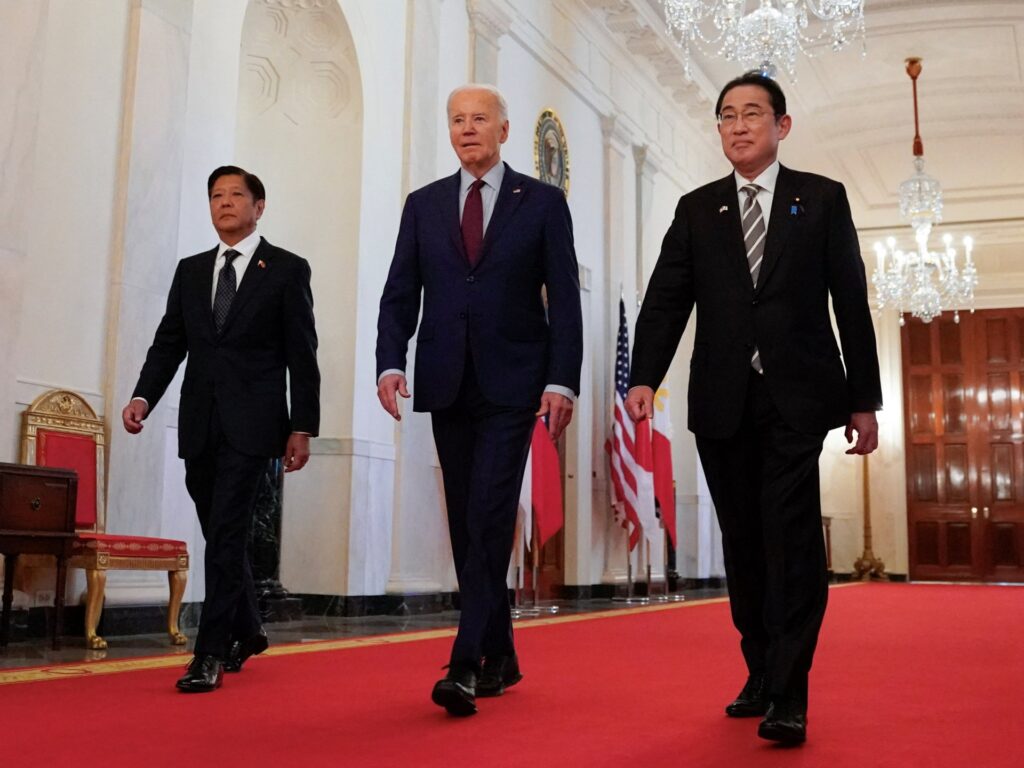At the meeting in Washington, DC, the leaders of Japan, the Philippines, and the United States emphasized the importance of adhering to maritime law.
The leaders of Japan, the Philippines and the United States expressed “grave concern” over China's actions in the disputed South China Sea.
The Chinese government has stepped up its activities in this strategic waterway in recent years, especially amid rising tensions with the Philippines, one of the Southeast Asian countries that claims part of the sea around its coast. There is.
Philippine President Ferdinand Marcos said last month that Manila would take countermeasures against China after a clash off Second Thomas Shoal injured a Filipino soldier and damaged a ship.
“We express grave concern about the situation in the People's Republic of China. [PRC] “These are dangerous and aggressive actions in the South China Sea,” the three leaders said in a joint statement after the first-ever trilateral summit in Washington, DC.
Beijing claims almost all of the South China Sea based on the so-called nine-dash line, which was rejected by an international court in 2016.
In addition to the Philippines, Brunei, Malaysia, and Vietnam also claim parts of the sea.
The statement noted “the importance of respecting the sovereignty of States within their exclusive economic zones.” [EEZ] Consistency with international law as reflected in the 1982 United Nations Convention on the Law of the Sea [UNCLOS]”.
The three countries also reiterated their opposition to China's “dangerous and forced use of coast guard and maritime militia vessels in the South China Sea.”
The Second Thomas Shoal, known in the Philippines as Ayungin, has been the scene of several standoffs between Beijing and Manila in recent months, with ships attempting to resupply a contingent of Filipino sailors aboard the intentionally stranded Sierra Madre. In response, the Chinese coast guard used water cannon.
According to the United Nations Convention on the Law of the Sea, the shoal is about 200 kilometers (124 miles) from Palawan Island in the western Philippines and within the Philippines' EEZ.
It is more than 1,000 kilometers (621 miles) from Hainan Island in southern China.

